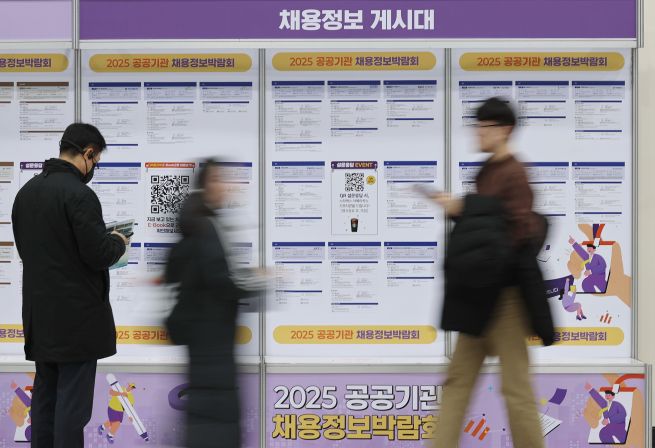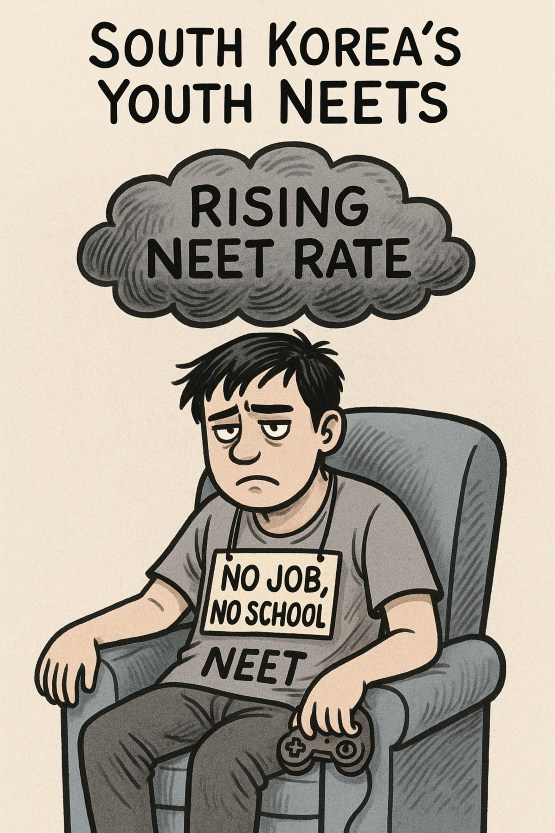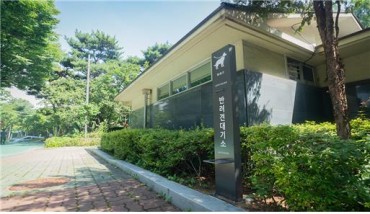
Job seekers are reviewing employment information at the “2025 Public Institution Job Fair,” held at the aT Center in Seocho-gu, Seoul, on January 16. (Yonhap)
SEOUL, May 26 (Korea Bizwire) — South Korea is the only major OECD economy where the proportion of youth not in education, employment, or training (NEET) has increased over the past decade, according to a new government-backed study.
The country’s NEET rate remains significantly above the OECD average, raising fresh concerns about barriers to labor market entry for young people.
A report released on Sunday by the Korea Employment Information Service (KEIS) found that 18.3% of South Koreans aged 15 to 29 were classified as NEET in 2022 — the third-highest among 11 major OECD nations analyzed.
This marks an increase from 17.5% in 2014, even as the OECD average fell from 15.7% to 12.6% over the same period.
In contrast, countries like Italy and Mexico — historically high in NEET rankings — all saw declines in their rates.
Persistent NEET Rate Despite Youth Population Decline
South Korea has not reported official NEET statistics to the OECD since 2014, prompting KEIS to recalculate the figures using national labor force survey data according to OECD definitions. The NEET rate peaked at 20.9% in 2020 and declined modestly thereafter, but remains higher than a decade ago.
Despite a falling youth population — from 1.56 million NEETs in 2008 to 1.25 million in 2024 — the structural composition of this group has shifted.
From 2018 to 2024, the NEET rate for young men increased from 13.5% to 15.7%, while the rate for women fell from 18% to 15%. The highest incidence was among those in their late 20s, particularly among men.
The report attributes the gender divergence to differing labor strategies: men often delay employment to prepare for higher-quality jobs following military service, while women tend to enter the workforce more quickly, often through temporary or irregular jobs.
Notably, the NEET rate among male university graduates reached 23%, marking the highest level by education category. The share of NEETs with college or university degrees rose sharply, even as the proportion of high school-educated NEETs fell.
Shift in NEET Composition and Policy Implications
The study also categorized NEET youth into six types: job seekers, education preparers, caregivers, non-job-seekers, those with physical or mental health issues, and those awaiting military enlistment. Of these, only the “non-job-seeking” group increased in size, suggesting that many youth are not actively engaged in career planning or training at all.
“The challenge is not only helping NEET youth find jobs, but also re-engaging those who have stopped looking entirely,” the report noted. “Psychological support is as important as economic opportunity.”
M. H. Lee (mhlee@koreabizwire.com)
KEIS recommends that the government develop integrated, personalized policies to build psychological resilience and strengthen career readiness. Emphasis was placed on expanding mental health services, particularly for those struggling with anxiety, isolation, or long-term unemployment.
As South Korea confronts a demographic cliff and rising youth disaffection, the report underscores the need for a reimagined support system — one that goes beyond job placement to address the underlying psychological and systemic barriers to participation.
M. H. Lee (mhlee@koreabizwire.com)







